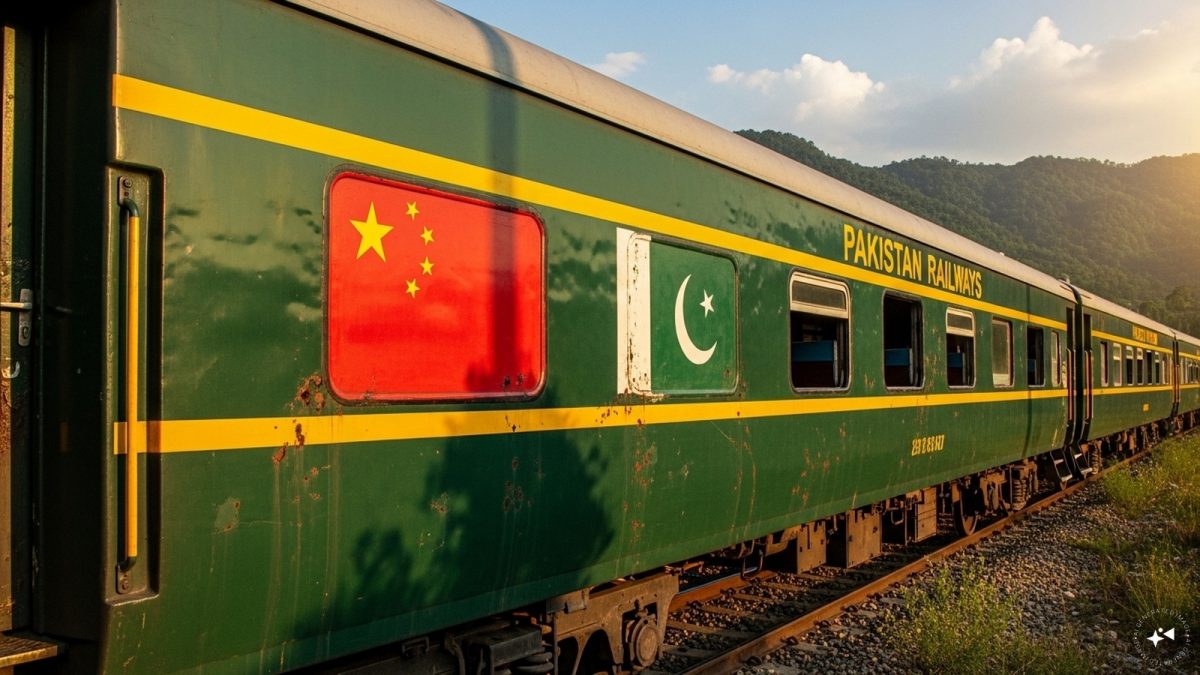An ancient Chinese fable tells us of a great dragon who boasted he could turn desert sands into a golden path. Yet as his fire raged across barren lands, no flowers bloomed—only ash remained. Pride blinded him to the earth’s whispers until thirst and folly claimed even the mightiest of beasts.
Beijing’s strategic withdrawal from a project of the China-Pakistan Economic Corridor (CPEC), the Main Line-1 (ML-1) railway upgrade, is an endeavour with no fairy tale ending. Pakistani Prime Minister Shehbaz Sharif, despite his recent visit to China, failed to gain the funding for CPEC 2.0. It is perhaps the most humiliating, yet pragmatic, decision in Beijing’s Belt and Road Initiative’s (BRI’s) decade-long history.
What once stood as the flagship project of Chinese global influence is disappearing, with economic, security, and institutional risks forcing Beijing to confront uncomfortable realities about Pakistan’s long-term viability as a strategic partner.
The Mirages of Gwadar
The symbolism is stark: Gwadar Port, once trumpeted as Pakistan’s “future Singapore”, received a mere 17 ships in 2023—making it China’s worst-performing BRI investment globally. That’s half a billion dollars of loans for Islamabad sunk shallowly. With 90 per cent of Gwadar’s already meagre revenues flowing directly to Beijing and local communities seeing virtually nothing, the port exemplifies the extractive nature of China’s Pakistan investments.
The failure reflects a deeper structural problem within CPEC. The port can handle merely 11 million tonnes of cargo annually—barely 17 per cent of Karachi’s capacity. The promised transformation of a sleepy fishing village into a commercial hub has instead produced a big fat beached and gasping white whale!
Impact Shorts
More ShortsThe Crown Jewel of Thorns
China’s withdrawal from funding the ML-1 railway project—once CPEC’s crown jewel—marks the clearest signal of this rapidly changing calculus. A 1,800-kilometre upgrade from Karachi to Peshawar, from which China has quietly stepped away. Pakistan has approached the Tokyo-based Asian Development Bank for $2 billion in financing.
This is the first time a multilateral lender may assume leadership of a project originally conceived as a flagship China Belt and Road. The ADB could lose billions.
Remarkably, this is despite the Reko Diq copper-gold mine, one of the world’s largest untapped mineral deposits. Yet even the promise of transporting precious metals from this so-called $9 billion project, for which Pakistan has yet to tie up funding, could not overcome Chinese concerns!
The Maths of Disillusionment
Pakistan owes China big time. The debt has reached staggering proportions—$29.6 billion, representing 30 per cent of the country’s total external debt. This figure, reluctantly disclosed to the IMF during Pakistan’s latest bailout, reveals how CPEC has transformed from an economic opportunity into a financial shackle. China does not invest; it gives upfront loans. Chinese energy sector investments alone account for $15-16 billion in debt, with Pakistan struggling to pay back.
The International Monetary Fund’s (IMF’s) refusal to write off Pakistan’s recent foreign exchange debt complicates Beijing’s position. Under the terms of its $7 billion Extended Fund Facility, Pakistan has committed to fiscal discipline that explicitly limits allocations to settle dues with Chinese companies.
Global Retreat from Grand Ambitions
China’s disengagement from Pakistan reflects a broader recalibration of BRI priorities as Beijing confronts economic headwinds. Panama’s recent withdrawal from the BRI, following the earlier departures of Myanmar and scaling back by Sri Lanka. Put differently, there is growing scepticism about Chinese infrastructure diplomacy.
Myanmar’s experience offers particular parallels to Pakistan’s predicament. After initially embracing BRI projects, Yangon scaled back participation following Sri Lanka’s cautionary example of losing control of strategic assets to Chinese creditors. The suspension of the billion-dollar Myitsone dam project in 2011 presaged the broader pattern of BRI disappointments.
Strategic Implications for India
India must leverage this moment of Chinese retreat. New Delhi should actively lobby the Asian Development Bank against funding the ML-1 railway upgrade.
The Arithmetic of Abandonment
The numbers tell the story of China’s strategic retreat with brutal clarity. CPEC, originally valued at $46 billion and later expanded to $62 billion, has delivered far below expectations. Chinese BRI investments globally reached $51 billion in 2024, but this represents a fundamental shift toward smaller, more targeted projects rather than the grand infrastructure initiatives that once defined the programme. The era of transformative mega-projects is over for Beijing. Xi Jinping has failed; the road is blocked, the belt much too tight.
Pakistan’s ironclad brotherhood with China has revealed its limits when confronted with fiscal reality. Beijing has just this one time rolled over $2 billion in loans while simultaneously withdrawing from new infrastructure commitments. Solidarity yields to solvency; all-weather friendships also face fiscal winters.
As the ancient fable concludes, the dragon learnt too late that true power lies not in grand gestures, but in understanding the limits of one’s reach. Beijing’s retreat from Pakistan may be pragmatic, but it marks the end of BRI’s most ambitious chapter.
It is a reminder that even the mightiest empires must reckon with the stubborn accountant’s worst nightmare, a sustainable return on capital.
The writer is a senior journalist with expertise in defence. Views expressed are personal and do not necessarily reflect those of Firstpost.
)